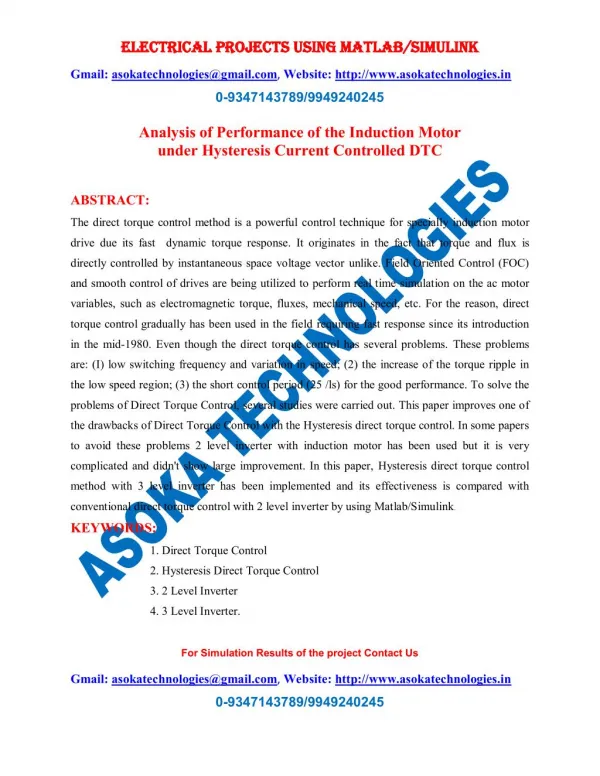Analysis of Performance of the Induction Motor under Hysteresis Current Controlled DTC
The direct torque control method is a powerful control technique for specially induction motor drive due its fast dynamic torque response. It originates in the fact that torque and flux is directly controlled by instantaneous space voltage vector unlike. Field Oriented Control (FOC) and smooth control of drives are being utilized to perform real time simulation on the ac motor variables, such as electromagnetic torque, fluxes, mechanical speed, etc. For the reason, direct torque control gradually has been used in the field requiring fast response since its introduction in the mid-1980. Even though the direct torque control has several problems. These problems are: (I) low switching frequency and variation in speed; (2) the increase of the torque ripple in the low speed region; (3) the short control period (25 /ls) for the good performance. To solve the problems of Direct Torque Control, several studies were carried out. This paper improves one of the drawbacks of Direct Torque Control with the Hysteresis direct torque control. In some papers to avoid these problems 2 level inverter with induction motor has been used but it is very complicated and didn't show large improvement. In this paper, Hysteresis direct torque control method with 3 level inverter has been implemented and its effectiveness is compared with conventional direct torque control with 2 level inverter by using Matlab/Simulink.
★
★
★
★
★
114 views • 6 slides
